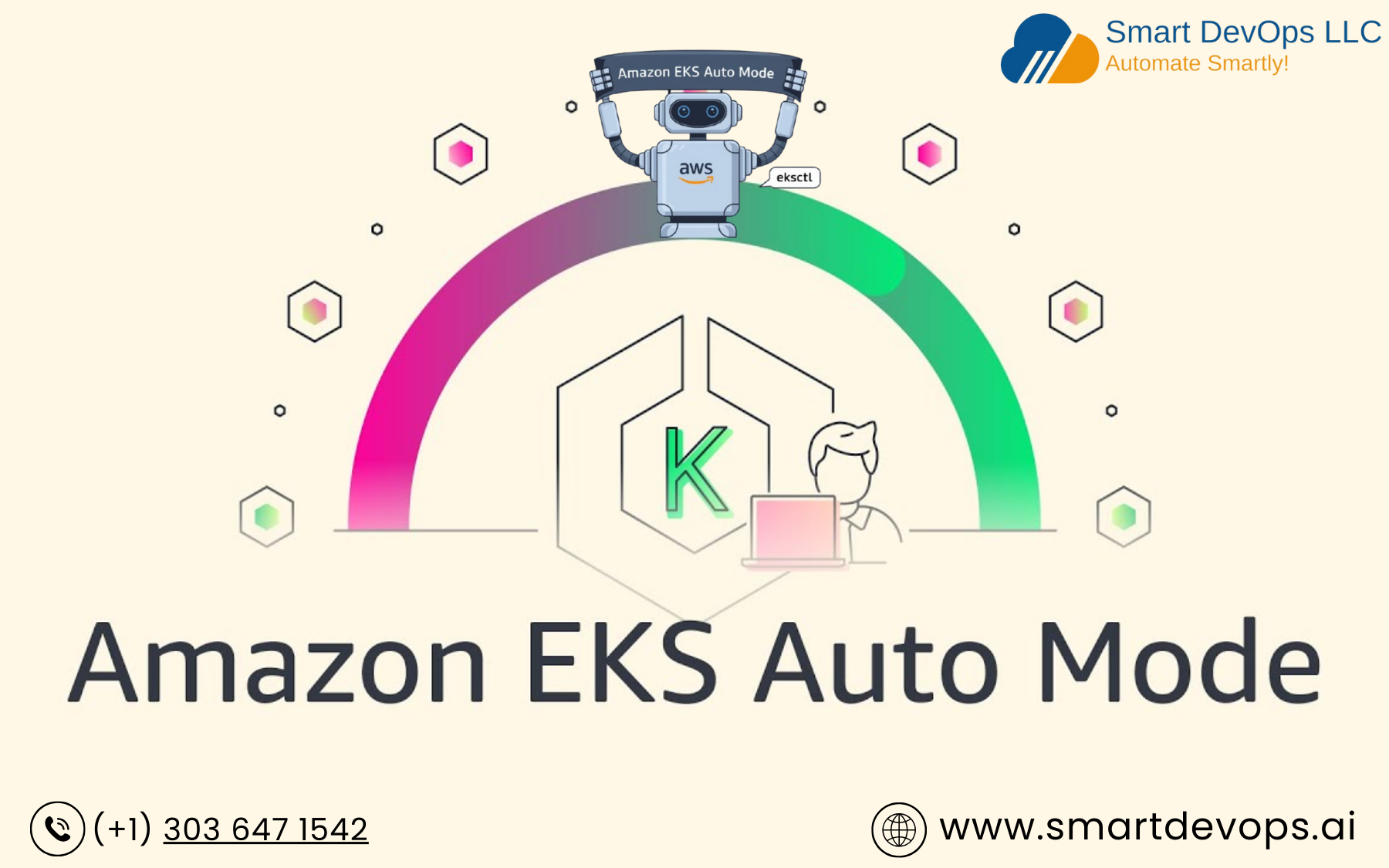
Introduction
EKS Auto Mode is a fully managed Kubernetes service that automates many of the complex tasks associated with running Kubernetes clusters. It takes care of provisioning, scaling, and managing the underlying infrastructure, allowing developers to focus on building and deploying applications. By automating critical infrastructure tasks, Auto Mode enables you to focus on deploying and scaling your applications, leaving the complexities of cluster management behind.
Key Features of EKS Auto Mode
Automated Cluster Management: Automatically provisions, scales, and manages Kubernetes clusters, including updates and lifecycle tasks.
Managed Infrastructure: Fully managed compute with EC2, automated instance selection, EBS storage, and seamless networking.
Enhanced Security & Compliance: Built-in security, role-based access, encryption, and compliance support.
Simplified Operations: Reduces operational overhead with automation and ensures high availability and reliability.
Advantages and Best Practices for Using EKS Auto Mode
1.Reduced Operational Overhead with Automation
Automates critical tasks like provisioning, scaling, and node upgrades, freeing developers to focus on application development.
Avoid manual changes to nodes by embracing immutable infrastructure, relying on EKS Auto Mode for updates and scaling.
2.Enhanced Security and Resilience
Implements robust security measures, including ephemeral, time-limited compute nodes and automated OS patching to reduce vulnerabilities.
Distribute workloads across multiple Availability Zones using pod topology spread constraints for improved resilience and fault tolerance.
3.Cost Optimization and Performance Monitoring
Optimizes resource utilization to lower compute costs by scaling based on demand.
Use Amazon CloudWatch to monitor resource usage, cluster performance, and optimize allocations for cost efficiency.
4.High Availability and Controlled Disruption
Facilitates rapid deployment of new workloads and applications, increasing agility to meet changing business needs.
Define pod disruption budgets to minimize the impact of updates or scaling activities on application availability.
Use Cases
1. Financial Services
High-Frequency Trading Firms: These firms require low-latency, high-throughput systems to execute trades rapidly. EKS Auto Mode can automate the scaling of their Kubernetes clusters to handle sudden spikes in trading volume, ensuring optimal performance and minimal downtime.
Banks and Insurance Companies: These organizations often deal with large volumes of data and complex applications. EKS Auto Mode can automate the management of their Kubernetes clusters, reducing operational overhead and improving the reliability of their systems.
2. E-commerce
Online Retailers: E-commerce companies experience significant traffic fluctuations, especially during peak shopping seasons like Black Friday and Cyber Monday. EKS Auto Mode can automatically scale their Kubernetes clusters to handle increased traffic, ensuring a seamless shopping experience for customers.
3. Healthcare
Healthcare Providers: Healthcare organizations often deal with sensitive patient data and require robust security measures. EKS Auto Mode can automate the management of their Kubernetes clusters, reducing the risk of security breaches and ensuring compliance with industry regulations.
4. Media and Entertainment
Streaming Services: Streaming services need to handle massive amounts of data and video traffic. EKS Auto Mode can automate the scaling of their Kubernetes clusters to support peak demand during popular TV shows or movie releases.
5. Gaming
Game Developers and Publishers: Game developers and publishers need to handle large numbers of concurrent users and provide a seamless gaming experience. EKS Auto Mode can automate the scaling of their Kubernetes clusters to support peak gaming traffic.
EKS Auto Mode vs Karpenter: Time to Switch?
If you're running Kubernetes on AWS and want a simpler, more automated approach to node management, EKS Auto Mode is the way to go. Unlike Karpenter, which requires you to configure node templates, manage custom AMIs, and handle scaling logic manually, Auto Mode lets AWS handle all the heavy lifting. It uses the lightweight and secure BottleRocket OS, preconfigures essential add-ons like EBS CSI and VPC CNI, and automatically optimizes workloads by consolidating nodes and shutting down unused ones to reduce costs. With automatic patching and node rotation every 14-21 days, Auto Mode enhances security without any manual intervention. While it doesn’t support custom AMIs or SSH access, these trade-offs make it an excellent choice for teams seeking ease of use, cost efficiency, and a production-ready environment with minimal management overhead. If you're ready to reduce complexity and let AWS take care of infrastructure, EKS Auto Mode is a smart upgrade.
Conclusion
EKS Auto Mode is a powerful tool that simplifies Kubernetes operations and reduces the complexity of managing infrastructure. By leveraging AWS's expertise, EKS Auto Mode empowers organizations to focus on innovation and accelerate application delivery. If you're seeking to streamline your Kubernetes journey and reduce operational overhead, EKS Auto Mode is an excellent choice.
